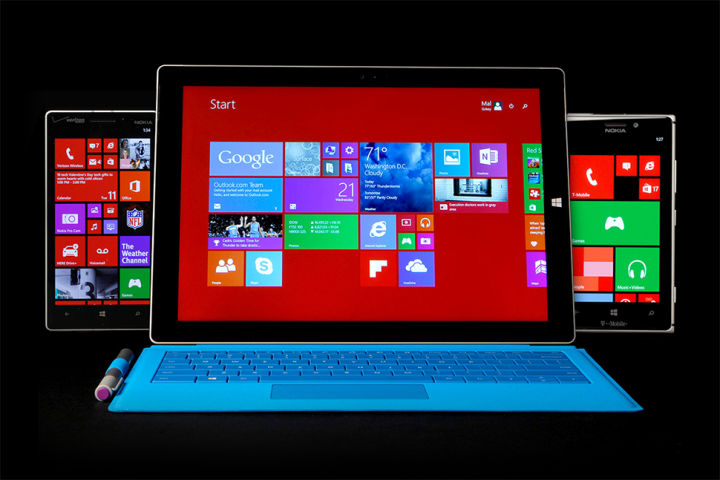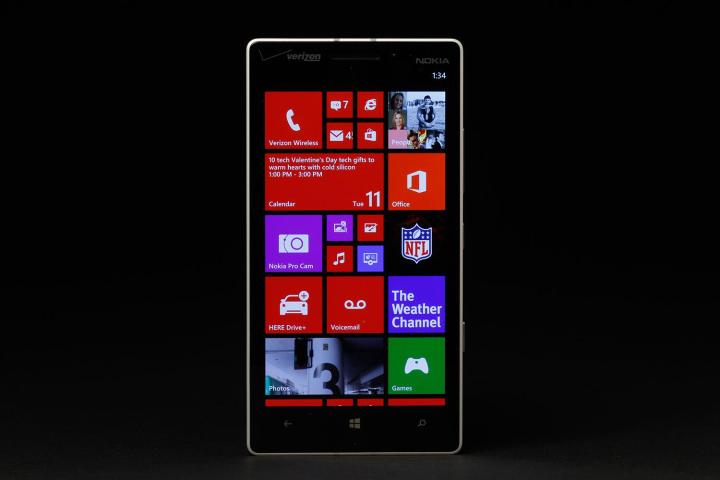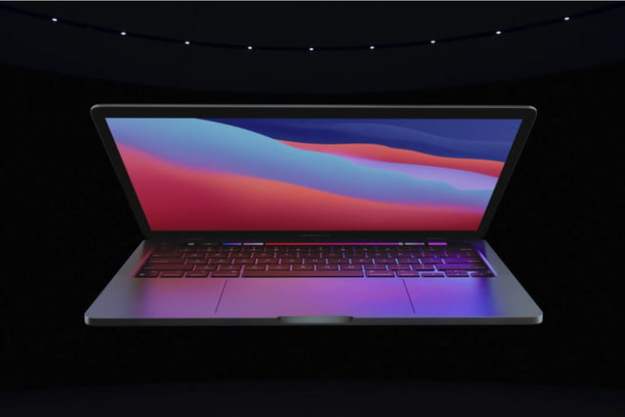
I’ve spent the past few weeks computing exclusively on a Microsoft Surface Pro 3 and a pair of phones running Windows Phone 8.1 – an experience I wouldn’t wish on an enemy.
Don’t get me wrong: These aren’t terrible products. In fact, I like them an awful lot. The Surface is a thing of beauty, perfectly designed to my eyes. The tablet portion is the ideal size, with a wonderful screen, and the type keyboard is responsive, fun and easy to use (yes, even on my lap). The Windows Phones are both elegant works of design as well, a Nokia Lumia 925 on T-Mobile and a Nokia Lumia Icon on Verizon — hands-down the best Windows Phone available.
The problem, in all three cases, is mostly with the software. I’ve found fixes for many of my chief complaints, and a just released firmware upgrade fixes many deficiencies in the Surface Pro 3. But for a company that mainly makes software, this many issues ain’t good.
Getting to know the gear
After a few days of using the Surface, after the fun wore off and I started getting down to work on the thing, quirks, issues and downright problems reared their head, and I was more frequently hunting for solutions than getting business done. I even found myself changing work habits to avoid things that simply didn’t work right.
Where to begin? For starters, the keyboard. While the keys are responsive, travelling to a surprising depth with a pleasant typing sound, I keep brushing the touchpad with the pads of my thumbs, bringing up the right-hand contextual menu (and activating some sort of alt-keyboard mode that I still don’t understand). For a long time, I couldn’t stop it. There were no settings, no adjustments of any sort, no solution in sight.
Silly me. The correct control is in the other Control Panel.
Silly me. The correct control is in the other Control Panel, the one you find by swiping from the right, tapping Settings, bypassing the enticing but worthless Keyboard item, and hunting through “Change PC settings.” There, under “PCs and devices,” lives another way to control the mouse and touchpad. Disable “swiping in from the left or right edge” and the touchpad because much better. Ugh.
For those times when the type cover isn’t attached, Microsoft has attempted to make life easier with a touch keyboard that pops up whenever you manually touch a field that requires text entry. It should remain hidden when the physical keyboard is attached, however.
It doesn’t always do so, however – a glitch that has spanned more than one generation of Surface tablet.
The issue has been fixed in most applications, but remains a glaring problem in Chrome, where I spend most of my time. It’s not Microsoft’s fault, of course — it’s Google’s. It doesn’t matter. It’s really annoying.

Then there’s the pen, a really, really neat idea I haven’t really used in my daily life. At the launch event in NYC last month, Microsoft’s Panos Panay showed how a double click on the purple, eraser-like end of the pen would automatically launch One Note.
It did not. Until Thursday.
The feature was finally enabled with a firmware update released June 19 and a software update you’ll have to install from within the Microsoft app store, quirkily enough. I still couldn’t get it working, however. It turns out that the pen requires Bluetooth for some features, and mere battery power for others. If you disable Bluetooth to save battery life, as I had, the pen stops working. Ugh.
If you disable Bluetooth to save battery life, as I had, the pen stops working. Ugh.
The Surface also has issues resuming from sleep, notably when the cover is attached. Sometimes I’ll pull it from my bag to find it steaming hot, awake even behind it’s type cover and waiting for me to start computing. More often, I’ll pull it out and open it up to a blank, frozen screen. The power button won’t return the Surface Pro 3 from sleep, and the only solution is a hard reset by holding the power and volume buttons down.
This issue, a Microsoft spokesman said, should have been fixed in the firmware update. I’ll let you know what I find over the next few days.
Enough has been written about Windows 8.1’s tiled interface that I won’t pile on here. Suffice to say, I don’t mind it, and the Surface 3 does a wonderful job working with the new tiled interface. I’ve been trying to force myself to run tiled apps alongside regular ones. The experience is okay, but in the end it hasn’t won me over. The weather app is beautiful, for example. But I’ve never left it running in a strip beside my browser.
The other half of the Windows world
And what of Windows Phone 8.1? I find the interface entrancing, the tiles that flip over to reveal bits of info, easily customizable and so much more modern than Android or iPhone. But it’s lonely in the Windows 8.1 ghetto: The absence of so many apps outweighs the niceties of the interface. Can I control a Fitbit? Nope. Can I dial down the temperature on my Nest? Nope. (Yes, I can use the website. No, I don’t want to.)
Any new piece of hardware comes with an iPhone app and, most of the time, an Android version. None have Windows Phone apps. Heck, the Facebook app was written by Microsoft. I guess the world’s biggest social network just didn’t care enough to put one of their own together.
One of the best weather apps I’ve ever seen is the website forecast.io. It’s not an app, but you can and should bookmark it onto your phone’s desktop. Does it run on IE on these phones? No.
The devices themselves are great. The Icon in particular feels wonderful in the hand. But where are the apps?
Get it together
Beyond the issues of the individual platforms, there’s the fact that Windows Phone 8.1 – the newest, hottest, most advanced phone software Microsoft has – doesn’t seem to know it’s sitting next to the Surface Pro 3, the newest, hottest, most advanced laptop from Microsoft. At the recent Apple Worldwide Developer Conference (WWDC 2014), Apple showcased the iPhone and the forthcoming OS X Yosemite working seamlessly hand in hand: The desktop software can answer phone calls, receive text messages, and in general seamlessly make the hand-off to the phone software.
For better or worse, Windows can’t do anything like that. Sure, Microsoft promises integration between the two: The tiled interfaces are very similar, and one Windows account should seamlessly bounce your apps, settings, and look and feel from a desktop to a phone and vice versa. In my experience, that doesn’t happen.
On both Windows phones I tested, I was forced to re-load every piece of software and re-enter every account username and password. And the tiles I have so carefully chosen and aligned – both on my personal Windows PC at home and then again on the Surface Pro 3 – didn’t carry over in either case.
Cortana is a solid alternative to Siri and Google Now. I like how it replies when I ask whether I’ll need an umbrella. Microsoft hasn’t ported it to the Surface Pro 3. The company says it will bring the technology to other platforms, it’s just taking the time to do it right. Sure.
Meanwhile, I’m going back to my trusty Asus Zenbook, and picking up the Google Nexus 5 again. They don’t talk to each other either, of course. But the three of us work wonderfully well together.
Editors' Recommendations
- Microsoft Surface Pro 9 vs. Surface Pro 8: here’s how they stack up
- Lenovo Yoga 9i 14 Gen 7 vs. Microsoft Surface Pro 8
- Microsoft Surface Pro 8 vs. Microsoft Surface Book 3
- Lenovo ThinkPad X12 Detachable vs. Microsoft Surface Pro 8
- Future Windows 11 tablets could borrow this important iPad feature






